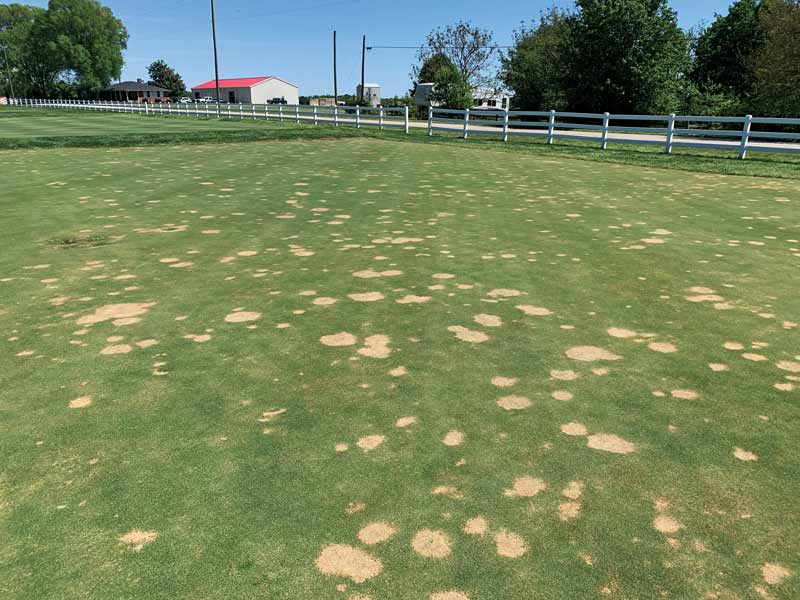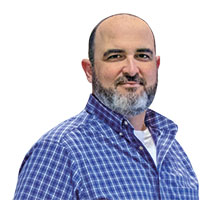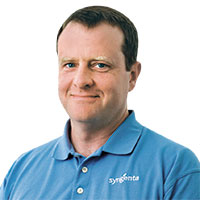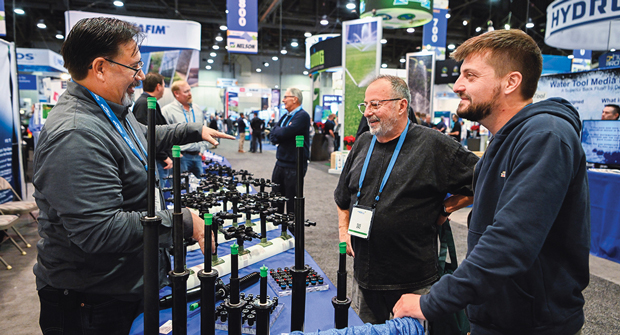Experts’ Insights: Spring dead spot

Spring dead spot is evident as turf greens up, but fungicide applications need to be made in the fall once the soil temperature falls below 70 degrees F. (Photo: Lee Butler)
Spring dead spot (SDS) is a predictable disease because once established, it tends to show up in the same area every year, especially in the Transition Zone, where bermudagrass and zoysiagrass are common. The fungus, Ophiosphaerella spp., weakens the plant in the fall, and the turf can’t survive the winter due to cold injury.
“Since SDS is connected with cold injury, you’ll see it more severe on north-facing slopes and in shady areas,” says Lee Butler, director of the Turf Diagnostics Lab at North Carolina State University.
It’s a good idea to document areas of SDS because symptoms start to appear at green-up, primarily because “that coming fall, when you make your fungicide applications, you know where to zero in on if you want to save money by not having to treat everything,” Butler says.
While it’s fairly easy to diagnose, there are three different species of fungi that cause SDS, and each species responds differently to cultural and chemical controls.
Butler said he and his research team found calcium nitrate is effective at controlling O. korrae, the most common species in the Mid-Atlantic, and ammonium sulfate is effective at controlling O. herpotricha, which is more common in the Midwest. It’s also a good idea to send in samples for species identification to incorporate that into your overall management plan.
Succinate dehydrogenase inhibitor (SDHI) and demethylation inhibitor (DMI) fungicides are most effective, but those applications must be made in the fall once soil temperatures reach 70 degrees F and watered in immediately with an 1/8-inch to 1/4-inch depth to be effective.
“Once symptoms appear in the spring, there is not much you can do from a fungicide standpoint. So, it’s all about recovery,” Butler says. “We tell turfgrass managers to treat it like a grow-in, not necessarily to give it more fertilizer or more water. Just do it more frequently to encourage growth back into the dead patches.”
You want the turf outside the spring dead spot areas to grow back in the middle. Butler says superintendents should avoid dinitroaniline herbicides commonly used for preemergent weed control in areas with known SDS, as those root-pruning herbicides will inhibit the bermudagrass or zoysiagrass from spreading into the patches.

Ian Rodriguez (Photo: Quali-Pro)
Quali-Pro
Ian Rodriguez
Technical services manager, Control Solutions Inc.
Spring dead spot (SDS) primarily affects bermudagrass that goes completely dormant and that’s been established for three years or more. It can occur on some zoysiagrasses. It’s most likely to occur in fairways, tees and greens. Symptoms of SDS become apparent as circular spots up to 3 feet in diameter that fail to green up. Recovery depends on regrowth from the outer edges, which can be slow. This disease is difficult to manage because it requires preventive fungicide application in the fall when symptoms are not present, and good control can take two years or more. Superintendents should note where symptoms appear in the spring for a directed approach in later months. Sound cultural decisions such as avoiding heavy fall nitrogen are helpful.

Bret Corbett (Photo: Prime Source)
Prime Source
Bret Corbett
Director of technical services
Ophiosphaerella korrae and O. herpotricha are the two most common pathogens causing spring dead spot in North America. These fungi are active during fall and spring when soil temperatures are cooler. Spring dead spot primarily affects bermudagrass and zoysiagrass, and symptoms appear at spring green-up as necrotic, circular patches ranging from 6 inches to several feet in diameter. Patches commonly recur in the same area and can increase in size from year to year. Superintendents use many fungicides for spring dead spot suppression. To be effective, applications need to be made when soil temperatures are between 55 degrees F to 80 degrees F and irrigated in. SDHI and DMI fungicides are efficacious, but results vary depending on which Ophiosphaerella species is present.

Brian Aynardi (Photo: PBI-Gordon)
PBI-Gordon Corp.
Brian Aynardi
Northeast research scientist
Spring dead spot is a disease caused by three species of fungi from the fungal genera Ophiosphaerella and occurs predominately on bermudagrass. The signs of these ectotrophic root-infecting fungi may be visualized with a hand lens or microscope by viewing the dark pigmented hyphae along the roots, rhizomes and stolons. SDS occurs on greens, tees, fairways and rough. The symptoms are dead circular areas up to several feet in diameter. Only preventive fungicide applications initiated in the fall provide control. Sequential applications of isofetamid fungicide at 1.6 fluid ounces of product per 1,000 square feet provide the best available control. There is no curative remedy for spring dead spot other than to promote growth of healthy turf over the dead areas.

Lane Tredway (Photo: Syngenta)
Syngenta
Lane Tredway
Technical services manager
If you’re growing bermudagrass in the Transition Zone, you’re probably going to get spring dead spot. The pathogen seems to be widely dispersed throughout the region. For reasons we don’t understand, the disease becomes more severe in some locations than in others. Assume the pathogen is present, and employ sound cultural practices. Preventive fungicide applications in the fall when soil temperatures are below 70 degrees F can provide effective control. We recommend two applications on a 21- to 28-day interval. Sprays should be watered in immediately with 1/8 to 1/4 inch of irrigation to move the active ingredient into the soil and root zone. Spring fungicide applications after symptoms have already appeared are not as effective as fall applications but may help speed recovery in some cases.











